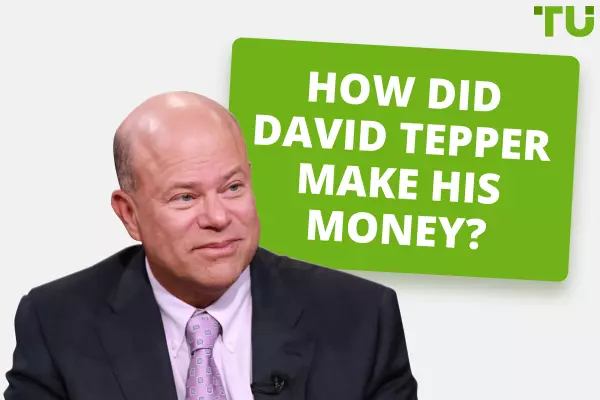Note: It is important to reassess your time horizon periodically. This may be due to changes in your financial or capital position, new market conditions, or simply an adjustment in your personal goals. Both you, your capital and your investment strategy must be able to adapt to new conditions.
How Your Time Horizon and Goals Shape Investment Strategy?

Top commission-free stock broker - eToro
An individual's investment time horizon and objectives significantly influence their choices in asset distribution. Individuals with longer timeframes can afford to take more risks, whereas those investing in the short term focus on preserving their capital.
| Time Horizon | Years | Investing Strategy |
|---|---|---|
Short-term |
1-4 years |
Minimal risk |
|
Medium-term |
4-10 years |
Moderate risk |
|
Long-Term |
More than 10 years |
High risk |
Your investment time horizon, the number of years until you need to access your capital, is key in directing your asset distribution. By identifying the right investment time horizon, you can select assets and strategies aligning with your financial needs. An investment plan tailored to your timeframe helps manage risk and achieve your objectives. This article discusses the different time horizons and their impact on your asset portfolios.
-
What is the time horizon in finance?
In finance, a time horizon represents the period an investor plans to hold an investment before accessing their funds. Depending on the investor's financial goals, strategies, and expectations, time horizons can vary - Short-term, Medium-Term, and Long-term.
What are the different investment goals?
While timeframes focus on when investment objectives define what you aim to achieve.
Three common investment objectives include:
-
Retirement Savings: When saving for retirement, you might shift your asset distribution from aggressive (more equities) to conservative (more fixed income and cash) as retirement age nears. Typically, the focus is on long-term growth initially, transitioning to capital preservation closer to retirement.
-
Wealth Accumulation: If growing your wealth over time is your goal, you might allocate a larger part of your portfolio to equities and real estate, which historically offer higher returns but also come with greater risk.
-
Income Generation: For income generation, you might concentrate more on fixed income, dividend-paying equities, and real estate investment trusts (REITs) that provide regular income.
Best stock brokers
What are the different investment horizons?
Your age, income, and lifestyle significantly influence your investment time horizon beyond your goals. Most people establish a range of time horizons for various investing objectives. A common rule of thumb dictates that the longer your time horizon, the more money you should invest in stocks, equity funds, and other risky investments.
| Time Horizon | Years | Investing Strategy |
|---|---|---|
|
Short-term |
1-4 years |
Minimal risk |
|
Medium-term |
4-10 years |
Moderate risk |
|
Long-Term |
More than 10 years |
High risk |
Long-Term (More than 10 years)
Long 10+ year horizons allow substantially more risk for higher return potential since more time exists to recover from downturns. Long-term investors should concentrate on equities, using fixed income for diversification. Many retirement savings have lengthy horizons, often investing in 401(k)s and IRAs. Younger investors should allocate more to stocks, shifting to bonds over time in an approach called lifecycle investing.
Medium-Term (4-10 years)
Those with medium 4-10-year horizons can handle moderate risk. A diverse portfolio, including stocks and bonds, is suitable, with the equity allocation varying based on risk tolerance. College savings goals often fall into this medium category. Closer to the end, assets could shift more conservatively.
Short-Term (Less than 4 years)
Investors with short time horizons of 1-3 years cannot afford significant risk, as there is insufficient time to recoup losses. Older, risk-averse investors nearing retirement may have short horizons and need assets to fund expenses soon. Young couples saving for near-term goals like a house down payment also need investment stability. Short-term investors should choose cash-like assets focusing on capital preservation and liquidity, including short-term bonds, CDs, and money funds.
Aggressive investors with high-risk tolerance may trade short-term using technical analysis or complex derivatives regardless of the timeframe. But most focus on an appropriate timeline matched to financial goals, shifting asset allocation and risk accordingly as the investment horizon shortens.
What affects the time horizon and investment goals?
There are several factors that influence an individual's investment timeframe and objectives:
-
Age: Younger investors can accept more risk with an extended timeframe. Older investors may need to conserve capital.
-
Risk tolerance: How much volatility you can stomach affects asset distribution. Conservative investors require more stability.
-
Liquidity needs: If you need frequent access to your finances, you need adequate cash and low-risk assets.
-
Change in objectives: Life events can modify your objectives and shorten or extend the timeframe.
-
Market conditions: Your choices may shift based on bullish or bearish markets.
-
Tax effects: You may harvest losses or defer taxes by adjusting timeframes.
-
Health and life expectancy: Your health and longevity prospects influence retirement and estate planning timeframes.
-
Macroeconomic factors: Inflation, interest rates, and fiscal policy impact returns and risk levels.
-
Relative wealth: If you have significant wealth, you can undertake more risk than those with fewer assets.
Conclusion
Understanding your time horizon and its relation to your financial goals is vital for successful financial planning. It determines the types of investments that best suit your objectives.
It's important to find a balance that is effective for you and allows you to make progress on both short and long term goals. This understanding aids decision-making, considering risk tolerance and liquidity needs.
Knowing the time before you need access to funds helps you identify the right investments. You can create your financial plan and choose suitable investments with sufficient time and interest.
Team that worked on the article
Upendra Goswami is a full-time digital content creator, marketer, and active investor. As a creator, he loves writing about online trading, blockchain, cryptocurrency, and stock trading.
Professionally, he has been a marketing professional running his agency for three years now. His agency helps finance projects to grow with the help of internet technologies. Upendra Goswami is an active investor and enthusiast of stocks and cryptocurrency.
Knows about
trading, blockchain, cryptocurrency, stock trading
Alumnus of
JECRC UDML College of Engineering, Jaipur
Dr. BJ Johnson is a PhD in English Language and an editor with over 15 years of experience. He earned his degree in English Language in the U.S and the UK. In 2020, Dr. Johnson joined the Traders Union team. Since then, he has created over 100 exclusive articles and edited over 300 articles of other authors.
The topics he covers include trading signals, cryptocurrencies, Forex brokers, stock brokers, expert advisors, binary options. He has also worked on the ratings of brokers and many other materials.
Dr. BJ Johnson’s motto: It always seems impossible until it’s done. You can do it.
Mirjan Hipolito is a journalist and news editor at Traders Union. She is an expert crypto writer with five years of experience in the financial markets. Her specialties are daily market news, price predictions, and Initial Coin Offerings (ICO). Mirjan is a cryptocurrency and stock trader. This deep understanding of the finance sector allows her to create informative and engaging content that helps readers easily navigate the complexities of the crypto world.











